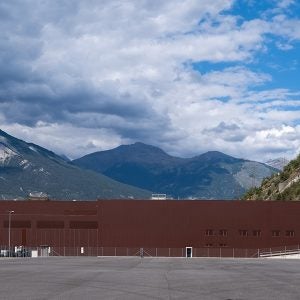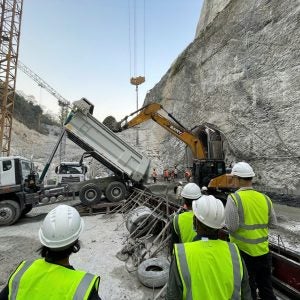More frequent and extreme weather events, such as drought, heatwaves and wildfire, will impact hydropower production and fresh water supplies. Research is underway to help future preparations for climate change.
Ageing energy grids weren’t designed to withstand the stress of climate change or the energy impact from extreme weather events like heat waves, droughts, or wildfires. With such events predicted to become more frequent and intense in the future, a team of scientists from the Pacific Northwest National Laboratory (PNNL) in the US is working on grid resilience in relation to climate change.
Even under modest climate change projections, the threat of power shortfalls, they warn, will become more common.
The Pacific Northwest region relies on hydropower to meet almost 50% of its electricity demands. With 90% of the Western US facing drought conditions in August 2021 (in 2020 it was 40%), the early summer heatwave led to a spike in energy demand. Hydropower dam operators were left with difficult choices and the threat of rolling blackouts. As PNNL reported, they either had to keep up with the power surge and leave less water for late summer or buy higher priced energy on the open market from sources such as natural gas.
Looking to relieve the pressure on overburdened grids and focusing on prevention, researchers at PNNL have been conducting studies to see how climate change will affect electricity delivery.
Modelling
Advanced modelling is being used to predict future droughts, help operators make risk-informed decisions and determine where vulnerabilities may lie. It will also help determine the impacts on generation and load, including short-term issues like heat waves or longer-term issues like droughts. Such information will aid the creation of hydropower and grid contingency plans, the implementation of smart electricity load controls, and forest management to reduce the impact of wildfire.
PNNL research has found that climate change modelling eliminates power shortfall in the winter but greatly increases the frequency of shortfall in the summer months due to lower stream flows and higher demand for cooling. However, even during a dry summer when hydropower’s overall generation is limited by low water availability, PNNL says that hydropower can still maintains its flexibility to support peak load under extreme events.
Fire risks
In 2021 California experienced an above-normal fire season. Such an event can impact the grid through intentional shutoffs to reduce fire risk or loss of infrastructure due to the fire itself. From 2000-16, wildfires caused at least US$700 million in damages to 40 transmission lines in California: nationwide costs are significantly higher.
The idea is not to stop all wildfires, PNNL explains, but to work in advance to reduce their risk and predict areas that are more prone to them. The focus is on forest thinning and restoration with the goal of leaving less fuel for fires – weaker fires are likely to burn less energy infrastructure.
Reducing fuel load in highly dense forests may also leave more water in streams and can lead to higher, longer-lasting snowpack which can produce more water throughout the summer dry season.
Following forest fires there is typically an increase in runoff and sedimentation which will cause problems downstream. A build-up of sediment flows in reservoirs is not ideal for infrastructure such as hydropower turbines.
Power systems are affected by multiple stressors simultaneously, PNNL explains, and these can cancel and compound each other in unexpected ways. Therefore, planning for climate change in the future looks like it will be more challenging that first thought. PNNL says that it is working hard to prepare for extreme events by taking a holistic approach to long-term planning with risk-informed decision-making.
Water security
Drought and water supplies are also a concern across the border in Canada. According to the 2021 BC Watershed Security Survey, published by the Real Estate Foundation of BC and the University of Victoria’s POLIS Water Sustainability Project, 66% of British Columbians are concerned about the potential for a major water crisis in their community in the next few years. This is up from 57% in 2018.
Such water concerns may have been heightened by the events of summer 2021. Three in four British Columbians surveyed say that this was one of the hottest, driest, and worst fire seasons in living memory. More than three-quarters now say that BC needs to make major investments in watershed security to protect fresh water.
“These trends reflect the growing consensus among both experts and the public that our water cannot be taken for granted. Watershed security — the need to responsibly and sustainably manage water and its sources — is the common theme that links the top issues of our time,” says Oliver M. Brandes, co-director of the POLIS Project at the University of Victoria. “Without watershed security, climate impacts are worse, droughts endure, wildfires intensify, salmon die, forests fail, soil is lost, food cannot grow, local economies falter, and conflict mounts.
“If this government is serious about solving problems, about securing this province for the future, it needs to be making these connections. With increasing climate instability in the face of increasing local development and an expanding population, taking action now is a no-brainer,” Brandes added. “Watershed security is more than just an environmental problem; watershed security is a reconciliation, health, and economic imperative.”






